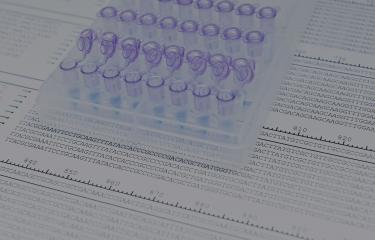Researchers from the Institut Pasteur and the CNRS have unravelled the cellular mechanisms that are deregulated in polycystic kidney disease (PKD), a life threatening genetic disease that damages kidney function. The authors showed that the dilation of renal tubules leading to cyst formation is linked to a disorganised growth of tubular cells. This research, published in “Nature Genetics”, permits a better understanding of the first stages of this genetic disease, and is an important step for the development of new therapeutic strategies.
Press release
Paris, december 11, 2005
PKD is one of the most widespread genetic diseases in the world, ahead of cystic fibrosis and muscular dystrophy, with 12.5 million people affected. PKD is characterized by a gradual increase in the diameter of renal tubules up to formation of cysts. These cysts become larger and larger, and finally damage the normal function of the organ. No specific treatment of the disease exists yet, and patients with the more severe forms, whose kidneys no longer function (around half of all patients in the course of their lives), must be treated by dialysis (renal function replacement therapy) or by kidney transplant.
Although it is known that cysts develop from renal tubules, very little is known about the mechanisms that cause their formation. Evelyne Fischer and Marco Pontoglio, in the Genetic Expression and Diseases Unit (Institut Pasteur - CNRS; directed by Moshe Yaniv), in collaboration with the team of Jean-François Nicolas, Molecular Biology of Development Unit (Institut Pasteur - CNRS), have unveiled the mechanisms involved in the development of the kidney, whose dysfunction causes the disease. By studying the tubular elongation process during development, they showed that the cells forming the tubules divide in a highly coordinated manner following the orientation of the tubule. This coordination enables the growing tubules to preserve a constant diameter. The authors showed that, in animals with polycystic kidney disease, this coordination is lost due to mutations in genes responsible for PKD in humans. Division of tubular cells changes from a tightly-controlled unidirectional process to a random orientation, causing tubular dilation and cyst formation.
Over the past several years, efforts have been undertaken to combat more efficiently the genetic diseases that strike many families. In spite of increased efforts, knowledge of how polycystic kidney disease is triggered remains murky. The Pasteur Institute and CNRS researchers’ work signifies a new hope in understanding this disease, and should open new therapeutic avenues for fighting it.
Sources
« Defective Planar Cell Polarity in Polycystic Kidney Disease» Nature Genetics 11 décembre 2005.
Evelyne Fischer (1), Emilie Legue (2), Antonia Doyen (3), Faridabano Nato (3), Jean-François
Nicolas (2), Vicente Torres (4), Moshe Yaniv (1) and Marco Pontoglio (1)
1. Unité d’Expression génétique et Maladies, Institut Pasteur-CNRS FE 2850
2. Unité de Biologie Moléculaire du Développement , Institut Pasteur-CNRS URA 2578
3. Plate-Forme de Production de Protéines recombinantes et d’Anticorps, Institu Pasteur
4. Division of Nephrology, Mayo Foundation, Rochester, Minnesota, USA
Contact press
Service de presse de l’ Institut Pasteur
Nadine Peyrolo
01 44 38 91 30 - npeyrolo@pasteur.fr
Service de presse du CNRS
Gaëlle Multier
01 44 96 46 06 - gaelle.multier@cnrs-dir.fr









